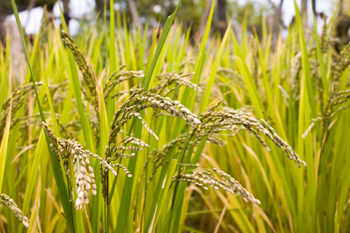Toronto, Jul 30: Researchers have identified "superstar" varieties of rice that can reduce fertiliser loss and cut down on environmental pollution.
The study looked at 19 varieties of rice to identify which ones were more efficient at using nitrogen.
 "We have this bucolic idea of agriculture - animals grazing or vast fields of majestic crops - but the global reality is it is one of the biggest drivers of environmental pollution and climate change," said Herbert Kronzucker from University of Toronto in Canada.
"We have this bucolic idea of agriculture - animals grazing or vast fields of majestic crops - but the global reality is it is one of the biggest drivers of environmental pollution and climate change," said Herbert Kronzucker from University of Toronto in Canada.
Nitrogen, when applied as fertiliser, is taken up inefficiently by most crops. In tropical rice fields, as much as 50 to 70 per cent can be lost, researchers said.
The problem is that nitrogen negatively impacts water quality by contaminating nearby watersheds or leaching into ground water. It is also a significant source of gases such as ammonia and nitrogen oxide, which are not only harmful to aquatic life but also a significant source of greenhouse gas emissions, they said.
While nitrogen is one of three main nutrients required for crops to grow, it also costs the most to produce, said Kronzucker.
"Anything we can do to reduce demand for nitrogen, both environmentally and for farmers in the developing world struggling to pay for it, is a significant contribution," he said.
The study for the first time identifies a novel class of chemicals produced and released by the roots of rice crops that directly influence the metabolism of soil microbes.
Researchers found that key microbial reactions that lead to an inefficiency in nitrogen capture can be significantly reduced in certain varieties of rice plants through the action of those specific chemicals released from root cells.
One of the main reasons crops waste so much fertiliser is that they were bred that way. In the past fertilisers were relatively inexpensive to produce because fossil fuels were abundant and cheap, researchers said.
As a result, plant geneticists bred crops that responded to high fertiliser use regardless of how efficient they were at using nitrogen, they said.
"These inefficiencies used to be of little interest, but now, with fluctuating fuel prices and growing concerns over climate change, it is a much bigger issue," said Kronzucker.
Researchers focused on rice varieties that met important criteria in the Philippines.They concentrated only on Japonica (the rice used in sushi) and Indica, the world's most popular rice type commonly grown in China, India and Southeast Asia.
The varieties also had to be currently grown by farmers, have a high yield potential, be disease and pest-resistant, grow to the right size and have strong enough roots to withstand monsoon-force winds.
"There is no reason a crop cannot result in less pollution while also saving farmers money; the two are not incompatible," said Kronzucker.





Comments
Add new comment